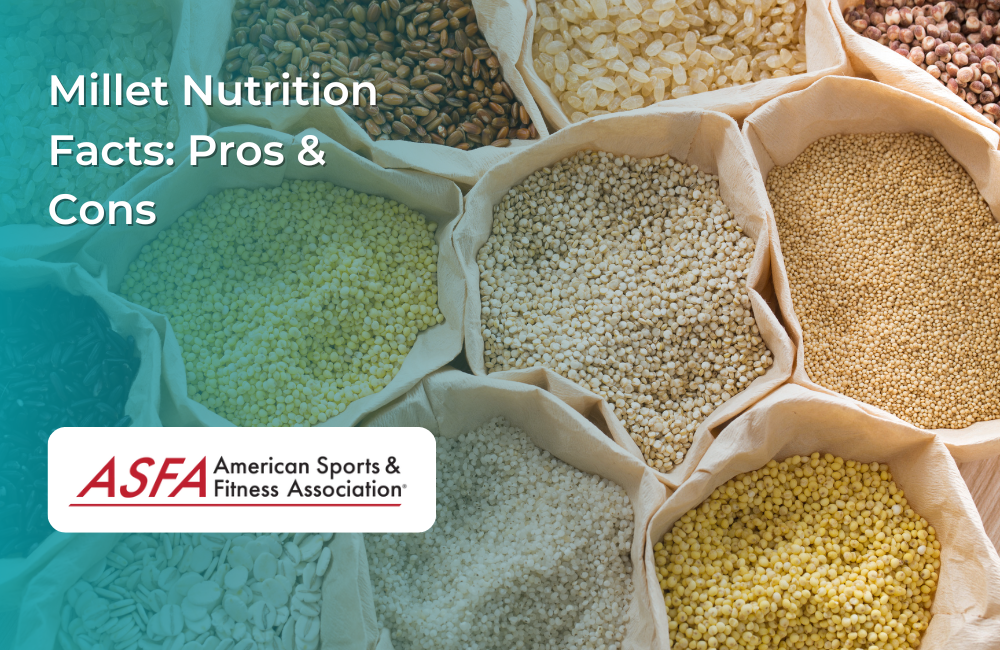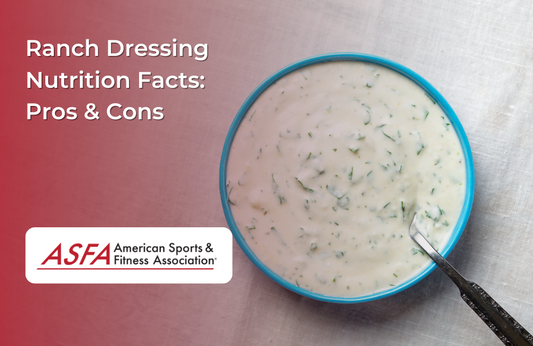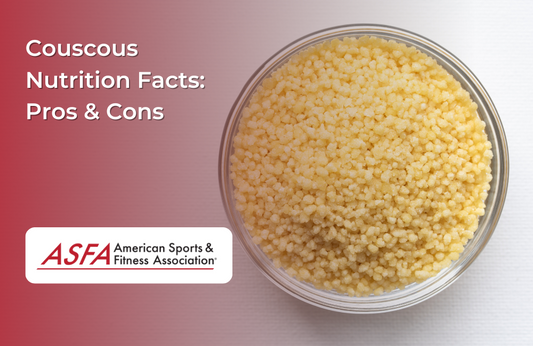Millet is a nutrient-dense, gluten-free ancient grain known for its high fiber, protein, and essential vitamins and minerals. It is widely consumed in Africa, Asia, and India and is valued for its digestive benefits, energy-boosting properties, and heart health support. While millet offers several health advantages, it also has some considerations regarding antinutrients and carbohydrate content. Understanding the pros and cons of millet helps in making informed dietary choices.
Millet Nutrition Facts: Pros and Cons of Eating Millet
Millet is high in fiber, which supports digestion, promotes gut health, and helps regulate blood sugar levels. Its fiber content makes it beneficial for weight management and heart health by improving satiety and lowering cholesterol levels.
It is an excellent plant-based protein source, making it a great option for vegetarians and vegans. Some millet varieties, such as foxtail and pearl millet, contain all essential amino acids, making them a high-quality grain protein.
Millet is rich in essential vitamins and minerals, including magnesium, phosphorus, iron, and B vitamins, which contribute to bone strength, muscle function, and energy metabolism. It also contains antioxidants, including polyphenols, which help reduce inflammation and oxidative stress.
Since millet is naturally gluten-free, it is a safe and nutritious gluten free grain alternative for people with gluten intolerance or celiac disease. It has a low to moderate glycemic index, meaning it is a better option for blood sugar control compared to refined grains when consumed in moderation.
Nutritional Profile
Millet is a powerhouse of nutrition, offering a wide array of essential vitamins, minerals, and antioxidants. A single cup of cooked millet packs:
-
2g of protein
-
2g of fat
-
20g of carbohydrates
-
2g of fiber
-
10% of the daily value (DV) for iron
-
10% of the DV for magnesium
-
10% of the DV for phosphorus
-
10% of the DV for zinc
In addition to these nutrients, millet is a good source of B vitamins such as thiamin, riboflavin, and niacin. These vitamins play a crucial role in energy metabolism and overall health. Millet also contains a variety of phytochemicals, including phenolic acids, flavonoids, and saponins, which are known for their antioxidant and anti-inflammatory properties. This nutrient-rich profile makes millet a valuable addition to any diet.
Health Benefits
Millet offers a multitude of health benefits, making it a versatile and nutritious grain choice:
-
Supporting Heart Health: The high dietary fiber content in millet helps lower cholesterol levels, reducing the risk of heart disease. Fiber binds to cholesterol in the digestive system, preventing its absorption into the bloodstream.
-
Supporting Digestive Health: Millet’s fiber content also promotes regular bowel movements and prevents constipation, contributing to overall digestive health.
-
Supporting Weight Management: Low in calories yet high in fiber, millet helps you feel full longer, making it an excellent choice for those aiming to lose or maintain weight.
-
Supporting Bone Health: Rich in calcium, magnesium, and phosphorus, millet supports strong bones and helps prevent conditions like osteoporosis.
-
Supporting Immune Function: The antioxidants in millet, such as phenolic acids and flavonoids, help combat oxidative stress and inflammation, bolstering the immune system.
These health benefits make millet a valuable addition to a balanced diet, contributing to overall well-being.
Types of Millet and Their Uses
Millet grains vary widely, each type offering unique nutritional benefits and culinary uses. Here are some of the most common types of millet:
-
Pearl Millet: Widely consumed in Indian and African cuisine, pearl millet is known for its robust flavor and high nutritional value. It is often used in flatbreads, porridges, and fermented foods.
-
Finger Millet: High in calcium, finger millet is a staple in Indian cuisine, commonly used to make rotis, dosas, and porridges. Its rich nutrient profile makes it particularly beneficial for bone health.
-
Foxtail Millet: Known for its high protein content, foxtail millet is a popular choice in Chinese cuisine. It is often used in stir-fries, salads, and as a rice substitute.
-
Proso Millet: High in fiber, proso millet is commonly used in Indian cuisine. It is versatile and can be used in soups, stews, and baked goods.
-
Barnyard Millet: With its high protein content, barnyard millet is another favorite in Indian cuisine. It is often used in dishes like upma, khichdi, and salads.
-
Kodo Millet: High in fiber, kodo millet is known for its digestive benefits. It is commonly used in Indian cuisine to make dishes like idlis, dosas, and porridges.
Each type of millet brings its own unique flavor and nutritional benefits to the table, making millet a versatile and valuable grain for various culinary applications.
Cons of Millet Consumption
Millet contains antinutrients, such as phytic acid and tannins, which may interfere with mineral absorption (such as iron and calcium). Raw millet can be prepared similarly to quinoa or couscous, and soaking or toasting it before cooking can enhance its flavor and reduce antinutrients. Soaking, sprouting, or fermenting millet can help reduce antinutrient levels and improve nutrient availability.
Some millet varieties contain goitrogens, which may affect thyroid function by interfering with iodine absorption if consumed in large amounts. People with thyroid disorders should eat millet in moderation and ensure adequate iodine intake.
Millet is high in carbohydrates, which may not be suitable for those following low-carb or ketogenic diets. While it is healthier than refined grains, portion control is important for those managing blood sugar levels or weight.
Conventionally grown millet may contain pesticide residues, so choosing organic millet or washing it thoroughly before cooking can help minimize exposure.
Conclusion
Millet is a nutrient-rich, gluten-free whole grain that provides fiber, protein, antioxidants, and essential minerals, making it beneficial for heart health, digestion, and energy metabolism. However, its antinutrient content, carbohydrate levels, and potential thyroid effects should be considered. Preparing millet properly through soaking, sprouting, or fermenting can help maximize its benefits while reducing potential drawbacks.
FAQs
Is millet a gluten free grain good for weight loss?
Yes, millet is high in fiber and protein, which promotes satiety and helps control appetite, making it beneficial for weight management. Millet flour is a versatile alternative to traditional wheat flour, enhancing the nutritional profile of baked goods and being gluten-free, it caters to various dietary needs.
Can diabetics eat millet?
Yes, millet grain has a lower glycemic index than refined grains, but portion control is important for blood sugar management.
Does millet affect thyroid function?
Millet contains goitrogens, which may interfere with iodine absorption if eaten in large amounts. Puffed millet, a versatile food product derived from millet grains, offers nutritional benefits but should also be consumed in moderation by individuals with thyroid conditions. Individuals with thyroid conditions should consume it in moderation.
How can I make millet easier to digest?
Soaking, sprouting, or fermenting millet reduces antinutrients and improves digestibility while enhancing nutrient absorption. Millet is commonly found in health food stores due to its numerous health benefits, such as supporting gut and heart health.
What is the best way to cook millet grains vary?
Millet can be boiled like rice, toasted before cooking for a nuttier flavor, or used in porridge, salads, and baked goods for a versatile grain option.





